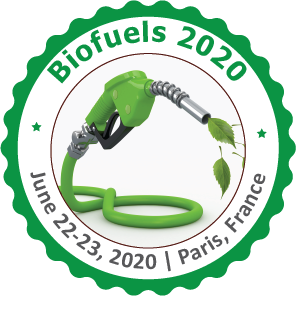Monika Prakash Rai
Amity Institute of Biotechnology, Amity University, Uttar Pradesh, India.
Title: Sugar distillery waste as a source of nutrients for microalgae biomass and lipid production in biodiesel application
Biography
Biography: Monika Prakash Rai
Abstract
Microalgae have potential to convert CO2 into carbon skeleton biomass that stores mainly starch and lipid rich compounds, which can be processed for sustainable biofuel production. Although, the high culture cost and low lipid productivity are foremost hurdles for its commercial feasibility in biodiesel application. Hence, these challenges are trying to overcome by establishing mixotrophic mode of cultivation using waste organic carbon sources as low cost substrates. In the present work, the molasses was collected from a sugar refinery and microalgae were isolated from sugar molasses by successive plating on BG-11 supplemented with 1% agar. The microalga isolated was identified as Chlorella sorokiniana (MS) by using 18 S rDNA marker.
Spent wash, a waste effluent of sugar distillery was collected from the same site and characterized for physico-chemical properties including chemical oxygen demand (COD), total nitrogen (TN), total phosphorus (TP) and total carbon (TC). Cultivation of microalgae was optimized in spent wash media by varying carbon concentration, nitrogen, pH, light intensity and photoperiod using response surface method (RSM). Maximum microalgae biomass of 3g/L was obtained by using 289.6 ml/L of spent wash maintaining at pH 6.5. Fluorescence microscopy confirms the increase in neutral lipids in the cell. Lipid was extracted by solvent extraction method and transesterified to obtain Fatty acid methyl esters (FAME) that was analysed by GC-MS. The FAME profile obtained includes the compounds like palmitic acid, oleic acid, linoleic acid, linolenic acid in a requisite ratio, those are essential for biodiesel synthesis. This study highlights the recycle of sugar distillery waste material spent wash as a nutrient source for microalgae biomass and lipid production for its potential application in biodiesel.

